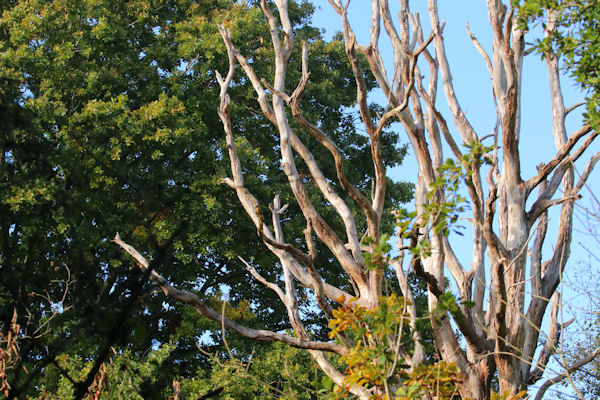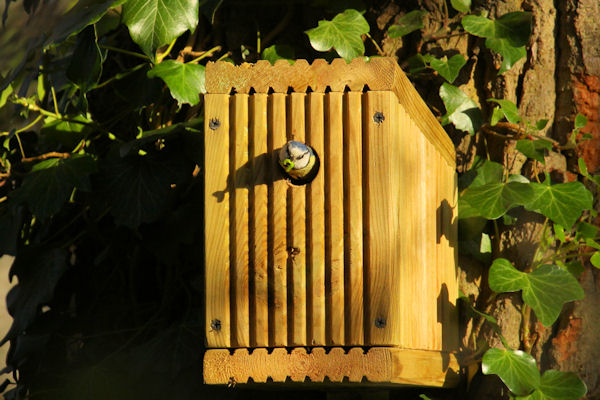October '22 in Bicknor Wood
The unseasonal mildness continued through October, but it is the diminishing daylight rather than the temperature that triggers the seasonal procession. Trees and plants feed from the UV light and photosynthesis slows as the nights draw in. The chlorophyll that depends on the sunshine dwindles and is overpowered by the carotenoids and anthocyanins, giving the autumnal colours that make such a spectacular show before the leaves fall.
As at October 18th, the Sessile Oak beside the burned tree was still clinging to its colour.

It is a time for fungi to take the headlines and there have been a few foraging mycophages in the wood during October. More commonly the myocphiles look to document and photograph.
There have been many new species showing their fruiting mushrooms this year and the height has been during October with more than 15 new species this month alone. Follow this link for an update.
The birds are becoming more vocal and visible again after a discrete summer. The Green Woodpecker tried to attract a mate during the spring with constant calling. He went quiet when success eluded him, but still puts in an appearance from time to time to bully the Great Spotted Woodpecker. A new bird viewing area is under construction with benches and feeders which will make many of the birds easier to spot.
Some birds such as Nuthatches and Treecreepers were difficult to find this year, but they appear to be moving back into the wood and were seen more frequently during October. Hopefully they will stay and set up territories for next year's breeding season.
Two species of gull, Herring Gull and Black-headed Gull, are frequently seen flying over, or stopping on the playing field to the west. The Black-headed Gull has now lost the dark head that it sports during the summer and has adopted its winter plumage. So here's a thing... the head of the Black-headed Gull is actually brown. Its scientific, specific name, ridibundus, means "laughing". The Laughing Gull actually has a black head but its latin name, atricilla means "unlucky Blackie".
.jpg)




.jpg)






I have some nice fungi finds to report, where can I send them to please?
ReplyDeleteHi Mark, thank you for contacting the blog
DeletePlease send any interesting finds to redgannet@gmail.com
Cheers
Simon